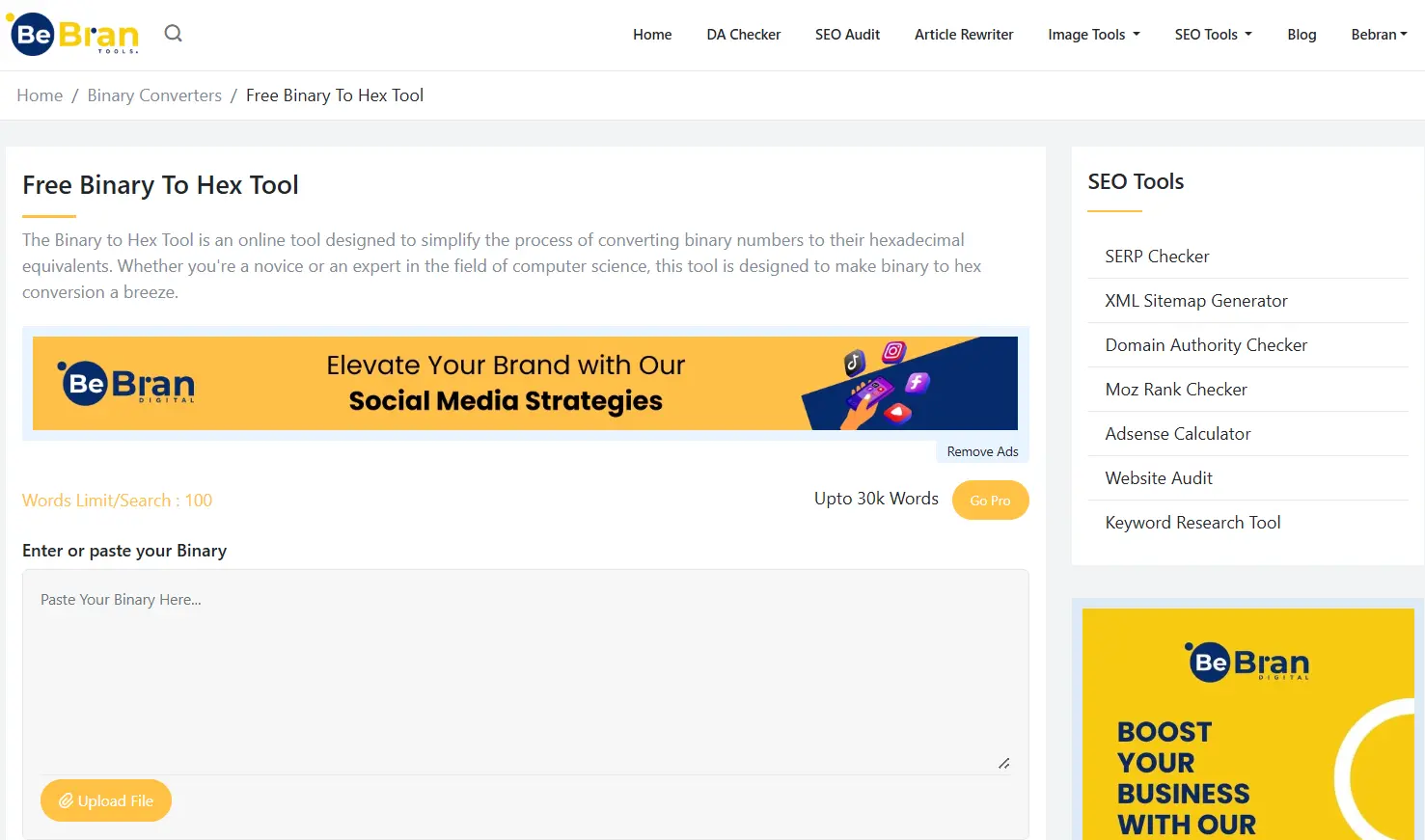
Converting Binary to Hexadecimal: Tips and Tricks
Converting binary numbers to hexadecimal is a useful skill in various fields, including computer science and electronics. The process is straightforward once you understand the basic concepts. In this detailed guide, we'll explore tips and tricks to make the conversion from binary to hexadecimal efficient and easy to understand and also introduce you a online converting binary to hexadecimal. Check out BeBran's Free Binary To Hex Tool.
Understanding the Basics Of converting Binary to Hexadecimal
Firstly, it's important to understand what binary and hexadecimal number systems are:
- Binary (Base-2): Consists of only two digits, 0 and 1. It's the fundamental language of computers.
- Hexadecimal (Base-16): Uses sixteen distinct symbols, 0-9 to represent values zero to nine, and A-F (or a-f) to represent values ten to fifteen.

The conversion process involves grouping binary digits (bits) and then translating these groups into hexadecimal digits.
Grouping the Binary Digits
Binary numbers are grouped in sets of four, starting from the right (least significant bit). For example, the binary number 1101011100 is grouped as 11 0101 1100. If the leftmost group doesn't have four bits, add leading zeros to make a group of four. For 1101011100, the first group becomes 0011.
Convert Each Group to a Hexadecimal Digit
Each group of four binary digits translates to a single hexadecimal digit. For instance, 1010 in binary converts to A in hexadecimal. It's helpful to have a chart for quick reference. Combine the hexadecimal digits obtained from each group to get the final hexadecimal number. For our example, 0011 0101 1100 becomes 3 5 C, so 1101011100 in binary is 35C in hexadecimal.
Free Tools: Free Word Combiner Tool Online | Free Paraphrased Tool Online | Free Word Counter Tool Online
Tips and Tricks
- Practice with a Calculator: Many scientific calculators have the functionality to convert binary to hexadecimal directly. Practicing with a calculator can help reinforce your understanding.
- Use Online Converters for Large Numbers: For long binary strings, online converters can save time and reduce the likelihood of errors.
- Memorize the Conversion Chart: Memorizing the binary-to-hexadecimal chart can significantly speed up the process.
- Understanding Byte Boundaries: In computer science, it’s common to work with bytes (8 bits). Knowing that two hexadecimal digits perfectly represent a byte can be useful.
Common Pitfalls to Avoid
- Incorrect Grouping: Always start grouping from the right. Incorrect grouping can lead to entirely different results.
- Forgetting Leading Zeros: Omitting leading zeros in the leftmost group is a common mistake that can alter the result.
- Misreading the Conversion Chart: Ensure accuracy when referring to the conversion chart, especially with similar-looking digits like B and 8 or 5 and S.
Conclusion
Converting binary to hexadecimal is a skill that becomes easier with practice. By understanding the basic principles, using a conversion chart, and applying the tips and tricks outlined above, you can efficiently convert binary numbers to hexadecimal. Remember, like any skill, consistency and practice are key to mastering this conversion method. Check out BeBran's Free Binary To Hex Tool.
Explore More: Advanced Features of Modern Grammar Checkers: Plagiarism Detection, Style Improvement, and Beyond | The Future of Grammar Checkers: AI Advancements and Evolving Writing Assistance Tools
Frequently Asked Questions
1. What is converting binary to hexadecimal?
It's the process of converting numbers from the binary system (base-2) to the hexadecimal system (base-16).
2. How do I start converting binary to hexadecimal?
Group the binary number into sets of four from the right, add leading zeros if necessary, and then convert each group to its hexadecimal equivalent.
3. Can I convert binary directly to hexadecimal without grouping?
No, binary numbers must be grouped in sets of four to be accurately converted to hexadecimal.
4. Do I always need to add leading zeros in binary to hexadecimal conversion?
Only if the leftmost group has less than four digits. This ensures each group contains exactly four bits.
5. How do I memorize the binary to hexadecimal conversion chart?
Regular practice and usage is the best way to memorize the conversion chart.
6. Is there a tool to convert binary to hexadecimal?
Yes, many scientific calculators and online converters can perform this conversion.
7. What is the importance of binary to hexadecimal conversion in computing?
It simplifies the representation and understanding of binary data, which is fundamental in computer systems.
8. Can hexadecimal be converted back to binary?
Yes, by reversing the process: convert each hexadecimal digit back to a four-bit binary group.
9. What are common mistakes to avoid in binary to hexadecimal conversion?
Incorrect grouping, omitting leading zeros, and misreading the conversion chart are common mistakes.
10. Is it necessary to learn binary to hexadecimal conversion in programming?
While not always necessary, understanding this conversion can be very helpful in certain areas of programming and computer science.



